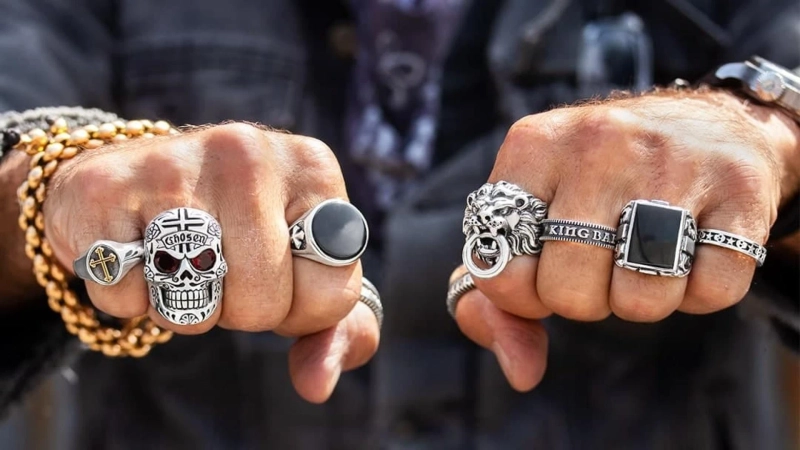The History of Gothic Jewelry
Gothic jewelry, with its dark elegance and intricate designs, traces its roots back to the medieval period. Originating in the late Middle Ages, this style drew inspiration from Gothic architecture, characterized by pointed arches, ribbed vaults, and flying buttresses. The use of religious symbols, mythological creatures, and nature-inspired motifs was prevalent in Gothic jewelry, reflecting the cultural and spiritual beliefs of the time.
Medieval Influence
During the medieval era, jewelry was not only a symbol of wealth and status but also a means of protection and spiritual connection. Amulets, crosses, and other religious symbols were commonly worn to ward off evil spirits and bring good fortune. The craftsmanship of Gothic jewelry was highly detailed, often featuring intricate metalwork, enameling, and the use of precious stones.
Victorian Revival
The Victorian era saw a resurgence of interest in Gothic jewelry aesthetics. This period, known as the Gothic Revival, was marked by a fascination with the macabre, the supernatural, and medieval romanticism. Victorian Gothic jewelry often incorporated motifs such as skulls, bats, and crosses, along with dark gemstones like onyx, garnet, and jet. Mourning jewelry, a significant aspect of this period, was created to commemorate deceased loved ones and often included hair or miniature portraits.
Characteristics of Gothic Jewelry
Gothic jewelry is easily recognizable by its distinctive features. The designs are often elaborate and ornate, reflecting a sense of mystery and drama. Here are some key characteristics that define Gothic jewelry:
Dark and Dramatic Aesthetics
The color palette of Gothic jewelry predominantly includes black, deep reds, purples, and dark blues. These colors evoke a sense of mystery and elegance, often enhanced by the use of dark gemstones such as onyx, amethyst, and black diamonds. The overall aesthetic is bold and dramatic, making a strong statement.
Symbolism and Imagery
Symbolism plays a crucial role in Gothic jewelry design. Common motifs include crosses, skulls, roses, serpents, bats, and mythical creatures like dragons and gargoyles. These symbols are often imbued with various meanings, such as life and death, love and loss, and protection against evil. The use of religious and esoteric symbols adds an element of mysticism to the jewelry.
Intricate Craftsmanship
Gothic jewelry is renowned for its intricate craftsmanship. Metalwork is often elaborate, featuring filigree, engraving, and detailed settings. The combination of metals such as silver, platinum, and blackened gold with gemstones creates a striking contrast. The meticulous attention to detail and the complexity of designs make each piece a work of art.
Modern Gothic Jewelry Trends
In contemporary fashion, Gothic jewelry continues to captivate with its timeless appeal. Modern interpretations of this style blend traditional elements with contemporary design techniques, creating unique and versatile pieces that can be worn for various occasions.
Fusion of Styles
Today's Gothic jewelry often incorporates elements from other fashion styles, such as punk, steampunk, and Victorian. This fusion results in eclectic and innovative designs that appeal to a broader audience. For example, a piece may feature the dark, ornate qualities of Gothic jewelry combined with the rugged, industrial aesthetic of steampunk.
Personalized and Custom Designs
Customization has become a significant trend in modern Gothic jewelry. Many designers offer bespoke services, allowing clients to create personalized pieces that reflect their individual style and preferences. This trend emphasizes the uniqueness and personal connection that Gothic jewelry can offer.
Sustainable and Ethical Practices
With growing awareness of environmental and ethical issues, many Gothic jewelry designers are adopting sustainable practices. This includes using recycled metals, ethically sourced gemstones, and environmentally friendly production methods. The emphasis on sustainability aligns with the Gothic ethos of respecting nature and the cycles of life and death.
Conclusion
Gothic jewelry, with its rich history and distinctive characteristics, continues to enchant and inspire. Its combination of dark, dramatic aesthetics, symbolic imagery, and intricate craftsmanship makes it a unique and enduring style. Whether drawn to its historical significance or its modern adaptations, those who appreciate Gothic jewelry find a deep connection to its enigmatic allure. As trends evolve, Gothic jewelry remains a testament to the beauty of darkness and the timeless appeal of the mysterious and the macabre.


